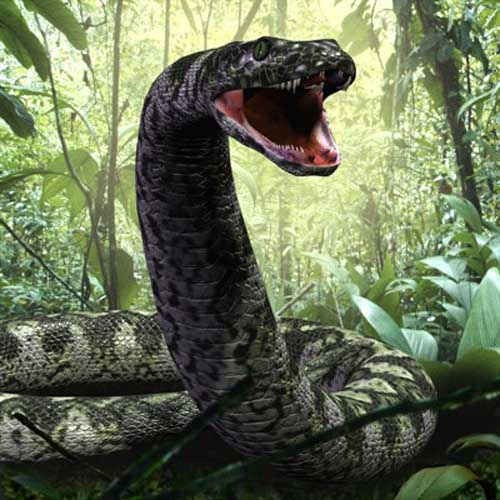Nature has always fascinated us with its incredible diversity and astonishing creatures, and one of the most awe-inspiring examples of this is the world’s largest snake. These colossal serpents, which can reach astonishing lengths, have captured the imagination of people around the globe. In this article, we’ll delve into the world of these giant snakes, exploring their species, characteristics, and the myths and facts surrounding them.

Anaconda: The Giant of the Amazon
When we talk about the largest snake in the world, the green anaconda (Eunectes murinus) reigns supreme. Native to the Amazon rainforest in South America, this behemoth of a snake can reach lengths of up to 30 feet or more and weigh as much as 550 pounds. Females are typically larger than males, making them truly colossal creatures.

Anacondas are renowned for their incredible strength, capable of overpowering and constricting large prey such as deer, caimans, and even jaguars. Their ability to swallow their prey whole, thanks to their incredible jaw flexibility, further adds to their fearsome reputation.
Titanoboa: The Prehistoric Giant

While the green anaconda is the largest snake alive today, it’s essential to mention a prehistoric giant that once roamed the Earth. Titanoboa, the largest snake known to have existed, lived approximately 60 million years ago during the Paleocene epoch. Fossils suggest that these colossal serpents could grow to an astonishing length of 42 feet and weigh more than 2,500 pounds. They inhabited the lush rainforests of prehistoric South America and likely preyed on large, primitive mammals.
Myths and Legends
The size and power of these massive snakes have given rise to numerous myths and legends throughout history. Stories of giant snakes that could swallow humans whole have circulated in various cultures, often contributing to people’s fear and fascination with these creatures. While anacondas are not known to eat humans, these myths continue to persist in some regions of the Amazon.

Conservation and Protection
The green anaconda, like many other snake species, faces threats from habitat destruction and illegal hunting. Conservation efforts are crucial to protect these incredible creatures and the delicate ecosystems they inhabit. Various organizations and initiatives are working tirelessly to raise awareness and ensure the survival of the world’s largest snake.

In conclusion, the world’s largest snake, the green anaconda, and its prehistoric counterpart, Titanoboa, are testaments to the incredible diversity of life on our planet. These awe-inspiring creatures remind us of the mysteries that still exist in the natural world and the importance of preserving their habitats. As we continue to learn more about these giants, we gain a deeper appreciation for the wonders of the animal kingdom.